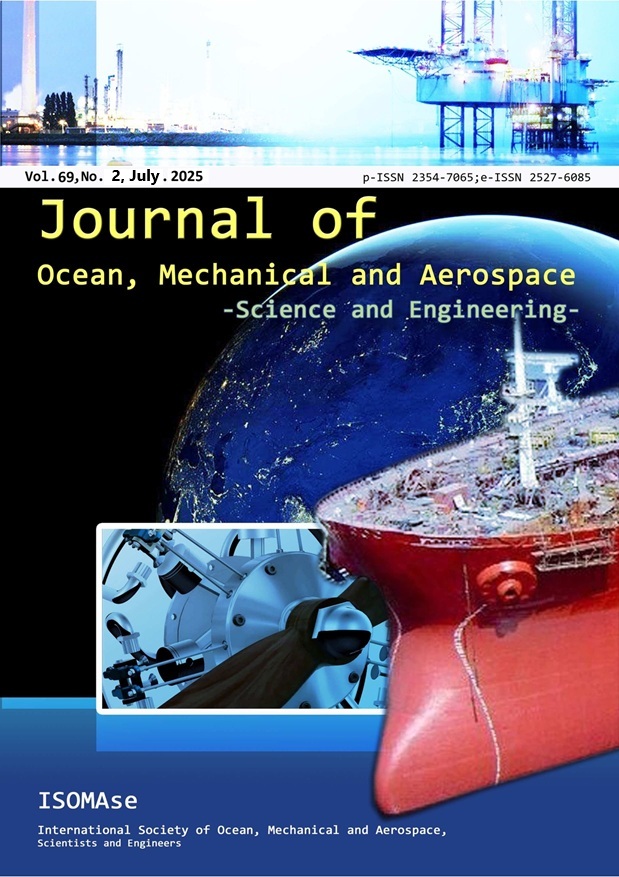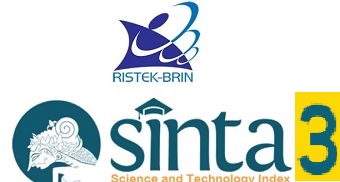Performance Evaluation of Fixed Pitch Propellers: Flow Visualization of Cavitation in Unmanned Surface Vehicles
Abstract
This study was conducted to determine a suitable and appropriate propeller for use on unmanned surface vehicles. The tests involved varying the number of blades-2, 3, and 4 of fixed pitch propellers type to assess thrust, propeller performance during straight-line motion and maneuvering, as well as the flow patterns around the propeller that have the potential to cause cavitation. The experiments were carried out in both a reservoir and a test tank. The results showed that the average thrust produced by the 2-blade, 3-blade, and 4-blade propellers was 13.32 N, 17.13 N, and 12.78 N, respectively. In the straight-line test over a 20-meter distance, the average speeds achieved were 1.49 m/s (2 blades), 1.40 m/s (3 blades), and 1.21 m/s (4 blades). For maneuvering, the average speeds recorded were 0.80 m/s, 0.61 m/s, and 0.49 m/s, respectively. Flow pattern analysis around the propellers revealed that cavitation occurred in almost all conditions and blade number variations. The fewer the blades, the more clearly cavitation bubble formation was observed. Similarly, increasing the propeller rotational speed can lead to a higher rate of bubble formation. Overall, the 3-blade propeller yielded the best performance for unmanned surface vehicle, offering an optimal balance of thrust, speed, maneuverability, and more controlled cavitation potential.















